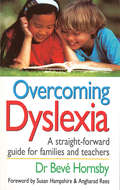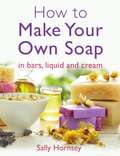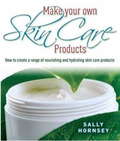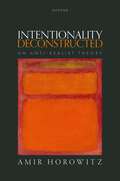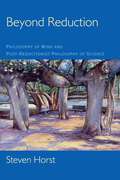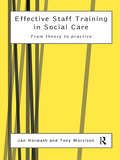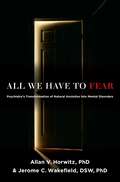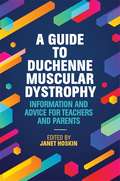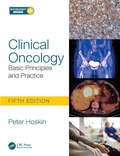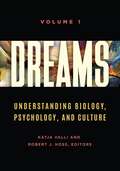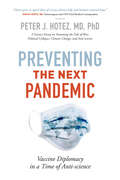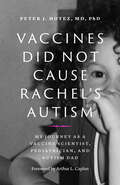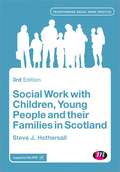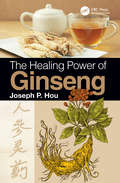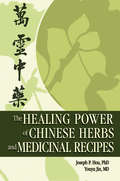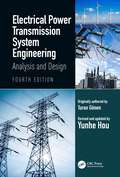- Table View
- List View
What is Social Work?: Context and Perspectives (3rd edition) (PDF)
by Nigel HornerNow in its third edition, this classic social work text explores the foundations of social care in the UK, how it evolved and why. It answers key questions on mental health, working with older people, working with families and children and much more. With expanded chapters on international social work, the new directions for social care and the implications of interprofessional working, this text is widely considered the best introduction to the subject a social work student can have.
Overcoming Dyslexia: A Straightforward Guide For Families And Teachers
by Dr Beve HornsbyDyslexia is a common diagnosable condition that is estimated to affect at least one child in ten. In its most usual form it is manifested as a difficulty in learning to read and write, but it is widely misunderstood and often mistaken for low intelligence or even laziness. Dr Beve Hornsby combines her experience as a psychologist, teacher and speech therapist in this informative and reassuring book for parents and teachers of children suffering from a disability no-one can see or understand, and offers advice on how to identify, tackle and eventually overcome dyslexia. Includes up-to-date information on Attention Deficit Disorder and the relevance of the latest Education Act.
How To Make Your Own Soap: … in traditional bars, liquid or cream
by Sally HornseyThis book will guide you through creating your own liquid and bar soap. Design and create bars of soap using traditional methods that incorporate moisturising oils and butters, and make fun and funky glycerine soaps that look almost too fabulous to use. If you prefer liquid soaps then this book also explains how to create liquid and cream soaps from scratch as well as how to design body washes using many of the easily obtainable surfactants. In this book you will discover how to:· Choose soap making ingredients that will be most beneficial for your skin type· Design and create a range of soapy products including hand and body washes· Scent your soaps using essential and fragrance oils· Make glycerine melt and pour soap from scratch· Understand different soap making methods and techniques
Make Your Own Skin Care Products: How to Create a Range of Nourishing and Hydrating Skin Care Products
by Sally HornseyIf treated and nourished properly your skin will be healthy and glowing, making you feel good and look great. This book will guide you through creating your own personal range of skin care applications, tailored to your particular skin type - or any body else's. The products made use natural ingredients where possible, and throughout the book you will find details of the purpose and benefits of the ingredients used. You will also learn about ingredients that can be substituted so that you can adapt the recipes to suit your or others' needs. In this book you will discover how to: - Choose essential oils that are useful for treating different skin conditions - Design and create a range of products including a cleanser, toner, face mask and moisturising cream - Identify the ingredients that are beneficial in hand-made skin care products - Make informed choices on which ingredients are most appropriate for different skin conditions - Make tinctures and infusions to use in your products - Store your products to ensure that they are fresh and safe to useContents: Introduction; 1. Sensible Healthy and Safety; 2. Tools of the Trade; 3. Why Is Your Skin So Important; 4. Caring for Your Skin; 5. Cosmetic Ingredients; 6. Making Facial Products: Routines & Recipes; 7. Making Tinctures & Infusions; 8. Treatments for Troubled Skin; 9. Emulsions, Antioxidants & Preserves; 10. Commerical Skincare Products; Resources; Index.
Intentionality Deconstructed: An Anti-Realist Theory
by Amir HorowitzIntentionality Deconstructed argues for the view that no concrete entity - mental, linguistic, or any other - can possess intentional content. Nothing can be about anything. The concept of intentionality is flawed, and so content ascriptions cannot be "absolutely" true or false - they lack truth conditions. Nonetheless, content ascriptions have truth conditions and can be true (or possess a related epistemic merit) relative to practices of content ascription, so that different practices may imply different (not real but practice-dependent) intentional objects for the same token mental state. The suggested view does not deny the existence of those mental states standardly considered intentional, notably the so-called propositional attitudes; it affirms it. That is, support is provided for the existence of those states with the properties usually attributed to them, but absent intentional properties. Specifically, it is argued that the so-called propositional attitudes possess logico-syntactic properties, whose postulation plays an important role in addressing the challenge of reconciling intentional anti-realism with beliefs being true or having alternative epistemic merits, the argument from the predictive and explanatory success of content ascription for intentional realism, and the cognitive suicide objection to views that deny intentionality. As part of the rejection of this final objection, intentional anti-realism is presented as a radical view, which claims "Nothing can possess intentional content" but not that nothing can possess intentional content, and it is argued that this is a legitimate characteristic of radical philosophy. In spite of rejecting the "claim that" talk, intentional anti-realism gives clear sense to its dispute with its rivals as well as to its own superiority. Various arguments for intentional anti-realism are presented. One argument rejects all possible accounts of intentionality, namely primitivism, intrinsic reductionism - the prominent example of which is the phenomenal intentionality thesis - and extrinsic reductionism (that is, reductive naturalistic accounts). According to another argument, since intentional properties are shown to be dispensable for all possibly relevant purposes, and no sound arguments support the claim that they ever are instantiated, the application of Ockham's razor shows that no such properties ever are instantiated, and another step shows that neither can they be.
Intentionality Deconstructed: An Anti-Realist Theory
by Amir HorowitzIntentionality Deconstructed argues for the view that no concrete entity - mental, linguistic, or any other - can possess intentional content. Nothing can be about anything. The concept of intentionality is flawed, and so content ascriptions cannot be "absolutely" true or false - they lack truth conditions. Nonetheless, content ascriptions have truth conditions and can be true (or possess a related epistemic merit) relative to practices of content ascription, so that different practices may imply different (not real but practice-dependent) intentional objects for the same token mental state. The suggested view does not deny the existence of those mental states standardly considered intentional, notably the so-called propositional attitudes; it affirms it. That is, support is provided for the existence of those states with the properties usually attributed to them, but absent intentional properties. Specifically, it is argued that the so-called propositional attitudes possess logico-syntactic properties, whose postulation plays an important role in addressing the challenge of reconciling intentional anti-realism with beliefs being true or having alternative epistemic merits, the argument from the predictive and explanatory success of content ascription for intentional realism, and the cognitive suicide objection to views that deny intentionality. As part of the rejection of this final objection, intentional anti-realism is presented as a radical view, which claims "Nothing can possess intentional content" but not that nothing can possess intentional content, and it is argued that this is a legitimate characteristic of radical philosophy. In spite of rejecting the "claim that" talk, intentional anti-realism gives clear sense to its dispute with its rivals as well as to its own superiority. Various arguments for intentional anti-realism are presented. One argument rejects all possible accounts of intentionality, namely primitivism, intrinsic reductionism - the prominent example of which is the phenomenal intentionality thesis - and extrinsic reductionism (that is, reductive naturalistic accounts). According to another argument, since intentional properties are shown to be dispensable for all possibly relevant purposes, and no sound arguments support the claim that they ever are instantiated, the application of Ockham's razor shows that no such properties ever are instantiated, and another step shows that neither can they be.
Beyond Reduction: Philosophy of Mind and Post-Reductionist Philosophy of Science (Philosophy of Mind)
by Steven HorstContemporary philosophers of mind tend to assume that the world of nature can be reduced to basic physics. Yet there are features of the mind consciousness, intentionality, normativity that do not seem to be reducible to physics or neuroscience. This explanatory gap between mind and brain has thus been a major cause of concern in recent philosophy of mind. Reductionists hold that, despite all appearances, the mind can be reduced to the brain. Eliminativists hold that it cannot, and that this implies that there is something illegitimate about the mentalistic vocabulary. Dualists hold that the mental is irreducible, and that this implies either a substance or a property dualism. Mysterian non-reductive physicalists hold that the mind is uniquely irreducible, perhaps due to some limitation of our self-understanding. In this book, Steven Horst argues that this whole conversation is based on assumptions left over from an outdated philosophy of science. While reductionism was part of the philosophical orthodoxy fifty years ago, it has been decisively rejected by philosophers of science over the past thirty years, and for good reason. True reductions are in fact exceedingly rare in the sciences, and the conviction that they were there to be found was an artifact of armchair assumptions of 17th century Rationalists and 20th century Logical Empiricists. The explanatory gaps between mind and brain are far from unique. In fact, in the sciences it is gaps all the way down.And if reductions are rare in even the physical sciences, there is little reason to expect them in the case of psychology. Horst argues that this calls for a complete re-thinking of the contemporary problematic in philosophy of mind. Reductionism, dualism, eliminativism and non-reductive materialism are each severely compromised by post-reductionist philosophy of science, and philosophy of mind is in need of a new paradigm. Horst suggests that such a paradigm might be found in Cognitive Pluralism: the view that human cognitive architecture constrains us to understand the world through a plurality of partial, idealized, and pragmatically-constrained models, each employing a particular representational system optimized for its own problem domain. Such an architecture can explain the disunities of knowledge, and is plausible on evolutionary grounds.
Effective Staff Training in Social Care: From Theory to Practice
by Jan Horwath Tony MorrisonEffective Staff Training in Social Care provides a theoretical framework for training and professional development, focusing on group learning in a social care context. It tackles the tensions and dilemmas of those engaged in training amidst a climate of change and a mixed economy of welfare and examines how these influence both the trainer and the learner. Strategies for transfering learning to the workplace and models of evaluation are analysed in depth. Effective Staff Training in Social Care enables the reader to reflect, analyse and develop their own training practice. This is essential reading for educators, trainers and managers working in social care settings.
Effective Staff Training in Social Care: From Theory to Practice
by Jan Horwath Tony MorrisonEffective Staff Training in Social Care provides a theoretical framework for training and professional development, focusing on group learning in a social care context. It tackles the tensions and dilemmas of those engaged in training amidst a climate of change and a mixed economy of welfare and examines how these influence both the trainer and the learner. Strategies for transfering learning to the workplace and models of evaluation are analysed in depth. Effective Staff Training in Social Care enables the reader to reflect, analyse and develop their own training practice. This is essential reading for educators, trainers and managers working in social care settings.
All We Have to Fear: Psychiatry's Transformation of Natural Anxieties into Mental Disorders
by Allan V. Horwitz, PhD Jerome C. Wakefield, DSW, PhDThirty years ago, it was estimated that less than five percent of the population had an anxiety disorder. Today, some estimates are over fifty percent, a tenfold increase. Is this dramatic rise evidence of a real medical epidemic? In All We Have to Fear, Allan Horwitz and Jerome Wakefield argue that psychiatry itself has largely generated this "epidemic" by inflating many natural fears into psychiatric disorders, leading to the over-diagnosis of anxiety disorders and the over-prescription of anxiety-reducing drugs. American psychiatry currently identifies disordered anxiety as irrational anxiety disproportionate to a real threat. Horwitz and Wakefield argue, to the contrary, that it can be a perfectly normal part of our nature to fear things that are not at all dangerous--from heights to negative judgments by others to scenes that remind us of past threats (as in some forms of PTSD). Indeed, this book argues strongly against the tendency to call any distressing condition a "mental disorder." To counter this trend, the authors provide an innovative and nuanced way to distinguish between anxiety conditions that are psychiatric disorders and likely require medical treatment and those that are not--the latter including anxieties that seem irrational but are the natural products of evolution. The authors show that many commonly diagnosed "irrational" fears--such as a fear of snakes, strangers, or social evaluation--have evolved over time in response to situations that posed serious risks to humans in the past, but are no longer dangerous today. Drawing on a wide range of disciplines including psychiatry, evolutionary psychology, sociology, anthropology, and history, the book illuminates the nature of anxiety in America, making a major contribution to our understanding of mental health.
All We Have to Fear: Psychiatry's Transformation of Natural Anxieties into Mental Disorders
by Allan V. Horwitz, PhD Jerome C. Wakefield, DSW, PhDThirty years ago, it was estimated that less than five percent of the population had an anxiety disorder. Today, some estimates are over fifty percent, a tenfold increase. Is this dramatic rise evidence of a real medical epidemic? In All We Have to Fear, Allan Horwitz and Jerome Wakefield argue that psychiatry itself has largely generated this "epidemic" by inflating many natural fears into psychiatric disorders, leading to the over-diagnosis of anxiety disorders and the over-prescription of anxiety-reducing drugs. American psychiatry currently identifies disordered anxiety as irrational anxiety disproportionate to a real threat. Horwitz and Wakefield argue, to the contrary, that it can be a perfectly normal part of our nature to fear things that are not at all dangerous--from heights to negative judgments by others to scenes that remind us of past threats (as in some forms of PTSD). Indeed, this book argues strongly against the tendency to call any distressing condition a "mental disorder." To counter this trend, the authors provide an innovative and nuanced way to distinguish between anxiety conditions that are psychiatric disorders and likely require medical treatment and those that are not--the latter including anxieties that seem irrational but are the natural products of evolution. The authors show that many commonly diagnosed "irrational" fears--such as a fear of snakes, strangers, or social evaluation--have evolved over time in response to situations that posed serious risks to humans in the past, but are no longer dangerous today. Drawing on a wide range of disciplines including psychiatry, evolutionary psychology, sociology, anthropology, and history, the book illuminates the nature of anxiety in America, making a major contribution to our understanding of mental health.
A Guide to Duchenne Muscular Dystrophy: Information and Advice for Teachers and Parents
by Janet Hoskin Kate Maresh Francesco Muntoni Veronica Hinton Lianne Abbot Victoria Selby James Poysky David Schonfeld Nick Catlin Celine Barry Jon Hastie Mark ChapmanThe prognosis for individuals with Duchenne Muscular Dystrophy (DMD) is improving, with some men with DMD living into their 30s and 40s. More vital than ever, this book helps teachers and parents to support children and young people with DMD with their education and transition into adulthood. Leading experts on DMD explain Duchenne and its impact in easy-to-understand terms. Going beyond physical management, particular focus is put on learning and behavioural issues, including speech delay and difficulty learning to read, as well as common comorbid conditions, such as ADHD, autism and OCD. Raising aspirations, the book gives guidance on effective support in the classroom and advice on the transition to adulthood, employment and independent living.
A Guide to Duchenne Muscular Dystrophy: Information and Advice for Teachers and Parents (PDF)
by Janet Hoskin Kate Maresh Francesco Muntoni Veronica Hinton Lianne Abbot Victoria Selby James Poysky David Schonfeld Nick Catlin Celine Barry Jon Hastie Mark ChapmanThe prognosis for individuals with Duchenne Muscular Dystrophy (DMD) is improving, with some men with DMD living into their 30s and 40s. More vital than ever, this book helps teachers and parents to support children and young people with DMD with their education and transition into adulthood. Leading experts on DMD explain Duchenne and its impact in easy-to-understand terms. Going beyond physical management, particular focus is put on learning and behavioural issues, including speech delay and difficulty learning to read, as well as common comorbid conditions, such as ADHD, autism and OCD. Raising aspirations, the book gives guidance on effective support in the classroom and advice on the transition to adulthood, employment and independent living.
Clinical Oncology: Basic Principles and Practice
by Peter HoskinThis popular textbook provides a clear and comprehensive introduction to the principles and practice of clinical oncology. Ideal for medical undergraduates, clinicians and other health professionals who want to increase their understanding of the challenges of managing patients with cancer, the book enables readers to learn and then test themselves on all aspects of cancer medicine, from epidemiology, aetiology, pathogenesis and presentation, through to diagnosis, staging, management and prognosis.
Clinical Oncology: Basic Principles and Practice
by Peter HoskinThis popular textbook provides a clear and comprehensive introduction to the principles and practice of clinical oncology. Ideal for medical undergraduates, clinicians and other health professionals who want to increase their understanding of the challenges of managing patients with cancer, the book enables readers to learn and then test themselves on all aspects of cancer medicine, from epidemiology, aetiology, pathogenesis and presentation, through to diagnosis, staging, management and prognosis.
Dreams [2 volumes]: Understanding Biology, Psychology, and Culture [2 volumes]
by Robert J. Hoss Katja Valli Robert P. GongloffThis two-volume set examines dreams and dreaming from a variety of angles—biological, psychological, and sociocultural—in order to provide readers with a holistic introduction to this fascinating subject.Whether good or bad and whether we remember them or not, each night every one of us dreams. But what biological or psychological function do dreams serve? What do these vivid images and strange storylines mean? How have psychologists, religions, and society at large interpreted dreams, and how can a closer examination of our dreams provide useful insights?Dreams: Understanding Biology, Psychology, and Culture presents a holistic view of dreams and the dreaming experience that answers these and many other questions. Divided thematically, this two-volume book examines the complex and often misunderstood subject of dreaming through a variety of lenses. This collection is written by a large and diverse team of experts and edited by leading members of the International Association for the Study of Dreams (IASD) but remains an approachable and accessible introduction to this captivating topic for all readers.
Preventing the Next Pandemic: Vaccine Diplomacy in a Time of Anti-science
by Peter J. HotezModern diseases and viruses have been spurred anew by war and conflict as well as shifting poverty, urbanization, climate change, and a new troubling anti-science/anti-vaccination outlook. From such twenty-first-century forces, we have seen declines in previous global health gains, with sharp increases in vaccine-preventable and neglected diseases on the Arabian Peninsula, in Venezuela, in parts of Africa, and even on the Gulf Coast of the United States. In Preventing the Next Pandemic, international vaccine scientist and tropical disease and coronavirus expert Peter J. Hotez, MD, PhD, argues that we can—and must—rely on vaccine diplomacy to address this new world order in disease and global health. Detailing his years in the lab developing new vaccines, Hotez also recounts his travels around the world to shape vaccine partnerships with people in countries both rich and poor in an attempt to head off major health problems. Building on the legacy of Dr. Albert Sabin, who developed the oral polio vaccine with Soviet scientists at the height of the Cold War, he explains how he is still working to refresh and redirect vaccine diplomacy toward neglected and newly emerging diseases. Hotez reveals how—during his Obama-era tenure as the US Science Envoy for the Middle East and North Africa, which coincided with both the rise in these geopolitical forces and climate change—he witnessed tropical infectious diseases and established vaccine partnerships that may still combat them up close. He explores why, since 2015, we've seen the decline of global cooperation and cohesion, to the detriment of those programs that are meant to benefit the most vulnerable people in the world. Unfortunately, Hotez asserts, these negative global events kick off a never-ending loop. Problems in a country may lead to disease outbreaks, but those outbreaks can lead to further problems—such as the impact of coronavirus on China's society and economy, which has been felt around the globe. Zeroing in on the sociopolitical and environmental factors that drive our most controversial and pressing global health concerns, Hotez proposes historically proven methods to soothe fraught international relations while preparing us for a safer, healthier future. He hammers home the importance of public engagement to communicate the urgency of embracing science during troubled times. Touching on a range of disease, from leishmaniasis, schistosomiasis, and Middle East Respiratory Syndrome (MERS) to COVID-19, Preventing the Next Pandemic has always been a timely goal, but it will be even more important in a COVID and post-COVID world.
Vaccines Did Not Cause Rachel's Autism: My Journey as a Vaccine Scientist, Pediatrician, and Autism Dad
by Peter J. HotezIn 1994, Peter J. Hotez's nineteen-month-old daughter, Rachel, was diagnosed with autism. Dr. Hotez, a pediatrician-scientist who develops vaccines for neglected tropical diseases affecting the world's poorest people, became troubled by the decades-long rise of the influential anti-vaccine community and their inescapable narrative around childhood vaccines and autism. The alleged link between the two was first espoused in a fraudulent scientific paper, long since retracted, but the story shows no signs of letting up. As a result, we've seen deadly and disabling outbreaks of vaccine-preventable diseases around the country, and Texas, where Hotez lives, is at particular risk.In Vaccines Did Not Cause Rachel's Autism, Hotez draws on his experiences as a pediatrician, vaccine scientist, and father of an autistic child. Outlining the arguments on both sides of the debate, he examines the science that refutes the concerns of the anti-vaccine movement, debunks current conspiracy theories alleging a cover-up by the CDC, and critiques the scientific community's failure to effectively communicate the facts about vaccines and autism to the general public, all while sharing his very personal story of raising a now-adult daughter with autism.A uniquely authoritative account, this important book persuasively provides evidence for the genetic basis of autism and illustrates how the neurodevelopmental pathways of autism are under way before birth. Dr. Hotez reminds readers of the many victories of vaccines over disease while warning about the growing dangers of the anti-vaccine movement, especially in the United States and Europe. A former US Science Envoy for the Department of State, he also explains what's at stake if the movement continues to gain ground. Opening with a foreword by leading medical ethicist Arthur L. Caplan, this book is a must-read for parent groups, child advocates, teachers, health-care providers, government policymakers, health and science policy experts, and anyone caring for a family member or friend with autism."When Peter Hotez;¢;‚¬;€?an erudite, highly trained scientist who is a true hero for his work in saving the world's poor and downtrodden;¢;‚¬;€?shares his knowledge and clinical insights along with his parental experience, when his beliefs in the value of what he does are put to the test of a life guiding his own child's challenges, then you must pay attention. You should. This book brings to an end the link between autism and vaccination.";¢;‚¬;€?from the foreword by Arthur L. Caplan, NYU School of Medicine
Vaccines Did Not Cause Rachel's Autism: My Journey as a Vaccine Scientist, Pediatrician, and Autism Dad
by Peter J. HotezIn 1994, Peter J. Hotez's nineteen-month-old daughter, Rachel, was diagnosed with autism. Dr. Hotez, a pediatrician-scientist who develops vaccines for neglected tropical diseases affecting the world's poorest people, became troubled by the decades-long rise of the influential anti-vaccine community and their inescapable narrative around childhood vaccines and autism. The alleged link between the two was first espoused in a fraudulent scientific paper, long since retracted, but the story shows no signs of letting up. As a result, we've seen deadly and disabling outbreaks of vaccine-preventable diseases around the country, and Texas, where Hotez lives, is at particular risk.In Vaccines Did Not Cause Rachel's Autism, Hotez draws on his experiences as a pediatrician, vaccine scientist, and father of an autistic child. Outlining the arguments on both sides of the debate, he examines the science that refutes the concerns of the anti-vaccine movement, debunks current conspiracy theories alleging a cover-up by the CDC, and critiques the scientific community's failure to effectively communicate the facts about vaccines and autism to the general public, all while sharing his very personal story of raising a now-adult daughter with autism.A uniquely authoritative account, this important book persuasively provides evidence for the genetic basis of autism and illustrates how the neurodevelopmental pathways of autism are under way before birth. Dr. Hotez reminds readers of the many victories of vaccines over disease while warning about the growing dangers of the anti-vaccine movement, especially in the United States and Europe. A former US Science Envoy for the Department of State, he also explains what's at stake if the movement continues to gain ground. Opening with a foreword by leading medical ethicist Arthur L. Caplan, this book is a must-read for parent groups, child advocates, teachers, health-care providers, government policymakers, health and science policy experts, and anyone caring for a family member or friend with autism."When Peter Hotez;¢;‚¬;€?an erudite, highly trained scientist who is a true hero for his work in saving the world's poor and downtrodden;¢;‚¬;€?shares his knowledge and clinical insights along with his parental experience, when his beliefs in the value of what he does are put to the test of a life guiding his own child's challenges, then you must pay attention. You should. This book brings to an end the link between autism and vaccination.";¢;‚¬;€?from the foreword by Arthur L. Caplan, NYU School of Medicine
Social Work with Children, Young People and their Families in Scotland (PDF)
by Steve J. HothersallSocial work with children and families in Scotland has undergone huge changes in recent years and this expanded and updated edition looks in even greater detail at the main policy and law issues and applies them to everyday practice issues. Students will feel confident that recent law changes are fully covered.
The Healing Power of Ginseng
by Joseph P. HouHealth and medical uses of ginseng is broad due to its adaptogenic properties, it is an effective tonic. Ginseng can be used to improve mental and physical performance, reduce stress, and increase longevity. This book covers the properties and uses of four varieties of ginseng in the world with focus on American and Asian types of ginseng. This books discusses healing properties of ginseng, growing ginseng plants, chemical, nutritional, medical and pharmacological properties, detoxification, longevity and proper usage of the root.
The Healing Power of Ginseng
by Joseph P. HouHealth and medical uses of ginseng is broad due to its adaptogenic properties, it is an effective tonic. Ginseng can be used to improve mental and physical performance, reduce stress, and increase longevity. This book covers the properties and uses of four varieties of ginseng in the world with focus on American and Asian types of ginseng. This books discusses healing properties of ginseng, growing ginseng plants, chemical, nutritional, medical and pharmacological properties, detoxification, longevity and proper usage of the root.
The Healing Power of Chinese Herbs and Medicinal Recipes
by Joseph P. Hou Youyu JinA modern reference guide on the benefits of incorporating traditional Chinese medicine into modern-day therapies!The Healing Power of Chinese Herbs and Medicinal Recipes is an easy-to-follow introduction to the history of traditional Chinese phytomedicine. This useful guide clearly explains the basics of this unique medical system and describes in detail the therapeutic properties and use of medicinal herbs and herbal recipes. The book includes a bibliography, glossary, contact information for herbal dealers and Oriental medicine schools, and an indexed list of 300 commonly used Chinese medicinal herbs and 245 herbal recipes. In The Healing Power of Chinese Herbs and Medicinal Recipes, you will find the fundamentals, evolution, and development of the herbal formulas of the 4,000-year-old Oriental Materia Medica, also known as ben cao. The book contains 11 sections documenting the therapeutic applications, dosages, precautions, and modern research findings of 138 of the most popular medicinal herbs. In addition, this resource provides 101 of the most frequently prescribed master recipes by famous ancient physicians, including their origin, ingredients, actions, indications, and modern clinical uses. The Healing Power of Chinese Herbs and Medicinal Recipes offers an in-depth education on: tonic herbs herbs that adjust the yin and yang of the body herbs that invigorate circulation of vital energy, qi, and blood herbal tranquilizers herbal diaphoretics herbal expectorants, antitussives, and antiasthmatics herbal pain killers herbs which regulate digestion and elimination herbal diuretics herbal antipyretics, antimicrobials, and detoxicants antitumor herbs The Healing Power of Chinese Herbs and Medicinal Recipes provides up-to-date information on the effectiveness of traditional Chinese medicine, as well as how to use Chinese medicinal herbs in conjunction with Western conventions. This comprehensive reference will benefit healthcare practitioners who want to include Oriental medicine in their practice, and anyone who is interested in Chinese herbs or patients for whom conventional medicine has offered no relief.
The Healing Power of Chinese Herbs and Medicinal Recipes
by Joseph P. Hou Youyu JinA modern reference guide on the benefits of incorporating traditional Chinese medicine into modern-day therapies!The Healing Power of Chinese Herbs and Medicinal Recipes is an easy-to-follow introduction to the history of traditional Chinese phytomedicine. This useful guide clearly explains the basics of this unique medical system and describes in detail the therapeutic properties and use of medicinal herbs and herbal recipes. The book includes a bibliography, glossary, contact information for herbal dealers and Oriental medicine schools, and an indexed list of 300 commonly used Chinese medicinal herbs and 245 herbal recipes. In The Healing Power of Chinese Herbs and Medicinal Recipes, you will find the fundamentals, evolution, and development of the herbal formulas of the 4,000-year-old Oriental Materia Medica, also known as ben cao. The book contains 11 sections documenting the therapeutic applications, dosages, precautions, and modern research findings of 138 of the most popular medicinal herbs. In addition, this resource provides 101 of the most frequently prescribed master recipes by famous ancient physicians, including their origin, ingredients, actions, indications, and modern clinical uses. The Healing Power of Chinese Herbs and Medicinal Recipes offers an in-depth education on: tonic herbs herbs that adjust the yin and yang of the body herbs that invigorate circulation of vital energy, qi, and blood herbal tranquilizers herbal diaphoretics herbal expectorants, antitussives, and antiasthmatics herbal pain killers herbs which regulate digestion and elimination herbal diuretics herbal antipyretics, antimicrobials, and detoxicants antitumor herbs The Healing Power of Chinese Herbs and Medicinal Recipes provides up-to-date information on the effectiveness of traditional Chinese medicine, as well as how to use Chinese medicinal herbs in conjunction with Western conventions. This comprehensive reference will benefit healthcare practitioners who want to include Oriental medicine in their practice, and anyone who is interested in Chinese herbs or patients for whom conventional medicine has offered no relief.
Electrical Power Transmission System Engineering: Analysis and Design
by Yunhe HouToday, there are various textbooks dealing with a broad range of topics in the power system area of electrical engineering. Some of them are considered to be classics. However, they do not particularly concentrate on topics dealing with electric power transmission. Therefore, Electrical Power Transmission System Engineering: Analysis and Design, as a textbook, is unique; it is written specifically for an in-depth study of modern power transmission engineering. Written in the classic, self-learning style of the original, Electrical Power Transmission System Engineering: Analysis and Design, Fourth Edition is updated and features: HVDC system operation and control Renewable energy (including wind and solar energy) Detailed numerical examples and problems MATLAB® applications This book includes a comprehensive and systematic introduction of electric power transmission systems, from basic transmission planning and concepts to various available types of transmission systems. Written particularly for a student or practicing engineer who may want to teach himself or herself, the basic material has been explained carefully, clearly, and in detail with numerous examples, which is also useful for professors. In addition to detailed basic knowledge of transmission lines, new components enabling modern electronics and renewable penetrated transmission systems are emphasized. The discussion goes beyond the usual analytical and qualitative analysis to cover overall aspects of transmission system analysis and design.

